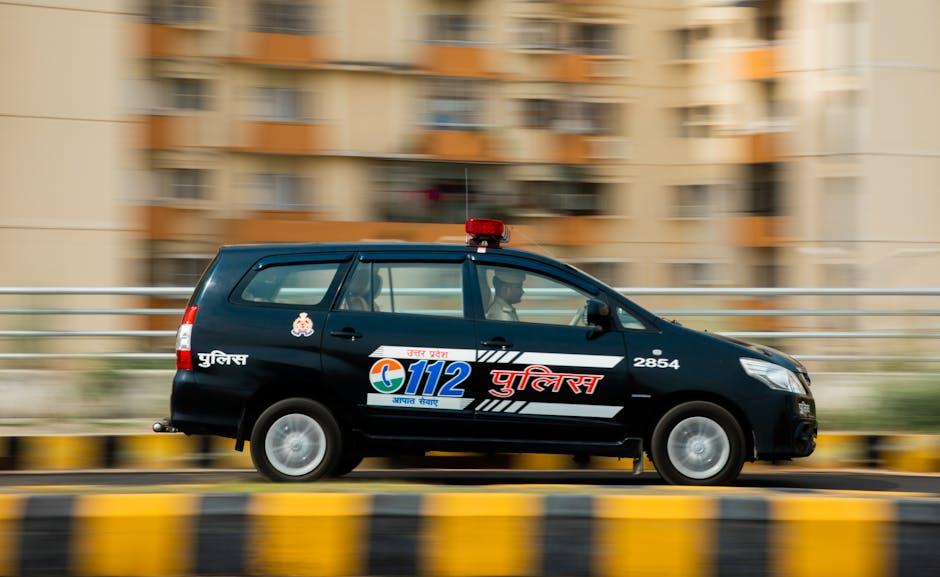There’s a subtle yet powerful magic to a freshly washed car—the gloss of its paint shimmering under the sunlight, the smooth finish inviting a gentle touch. But beneath that radiant surface lies a delicate balance, easily disrupted by the wrong washing techniques. Protecting your car’s paint isn’t just about aesthetics; it’s about preserving the beauty and value of your vehicle over time. In this article, we’ll explore thoughtful, effective ways to shield your car’s finish during every wash, turning a routine chore into a mindful ritual of care. Whether you’re a seasoned car enthusiast or a casual driver, understanding how to protect your paint can make all the difference in keeping your ride looking its best.
Table of Contents
- Choosing the Right Cleaning Products for Your Car’s Finish
- Mastering the Art of Pre-Wash Preparation
- Techniques for Avoiding Scratches During the Wash
- The Best Tools to Use for Gentle and Effective Cleaning
- Proper Drying Methods to Preserve Shine and Prevent Water Spots
- Long-Term Protection Strategies with Sealants and Waxes
- Q&A
- Closing Remarks
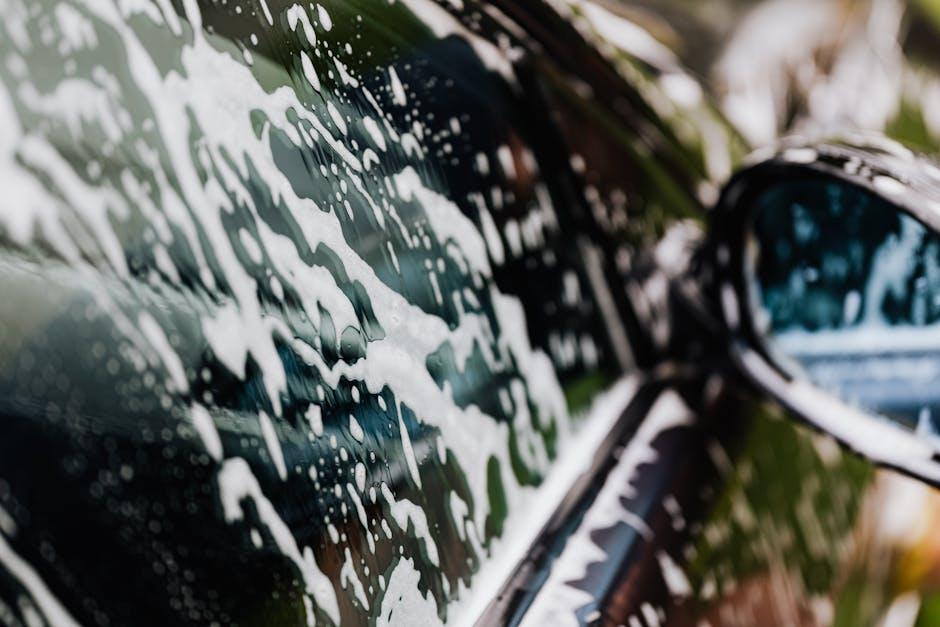
Choosing the Right Cleaning Products for Your Car’s Finish
When it comes to maintaining your car’s pristine finish, selecting the right cleaning products is crucial. Avoid harsh detergents or household cleaners, as they can strip away protective wax and lead to dullness or even damage the paint. Instead, opt for specially formulated car shampoos that are pH-balanced and designed to lift dirt gently without harming the surface. Look for products that also contain lubricants to minimize friction during washing, reducing the risk of micro-scratches. Remember, what you apply to your car’s surface plays a pivotal role in preserving its vibrance and shine.
To help choose wisely, consider this quick guide:
- Neutral pH cleaners: Safe for all paint types, preventing chemical reactions.
- Wax-friendly formulations: Do not strip wax, allowing protection to remain intact.
- Foaming agents: Enhance dirt encapsulation for gentle removal.
- Eco-friendly options: Reduce chemical footprint while delivering effective cleaning.
| Product Type | Recommended Use | Paint Protection Impact |
|---|---|---|
| Car Shampoo (pH-balanced) | Routine washing | Gentle on wax and clear coat |
| Clay Bar Lubricant | Removing contaminants | Safe smooth surface preparation |
| Detailing Spray | Quick clean-ups between washes | Maintains gloss without build-up |

Mastering the Art of Pre-Wash Preparation
Before you even reach for your hose or sponge, taking a deliberate moment to prepare your vehicle is crucial. Start by choosing a shaded spot to avoid rapid drying and water spots that can etch into your paint. Rinse the car thoroughly with water to loosen dirt, dust, and loose debris—this prevents scratching during the wash cycle. Using gentle pressure ensures you don’t embed particles into the paint’s surface. It’s also wise to inspect your car’s exterior closely; identify stubborn spots like tree sap or bird droppings, which may require specialized cleaners before a full wash.
Equipping yourself with the right tools can transform your pre-wash stage from routine to artful. Keep these essentials at hand:
- Microfiber mitt: Soft and effective in minimizing swirl marks.
- Pre-wash spray: Breaks down tough grime without harsh rubbing.
- Buckets system: Separate clean and dirty water to keep contaminants away.
- Detailing brush: Delicate enough for grilles and vents.
| Step | Tip | Purpose |
|---|---|---|
| 1 | Rinse from top to bottom | Wash away loosened dirt without dragging it |
| 2 | Use foam pre-wash spray | Break down heavy grime safely |
| 3 | Inspect and spot clean | Prevent permanent stains and scratches |
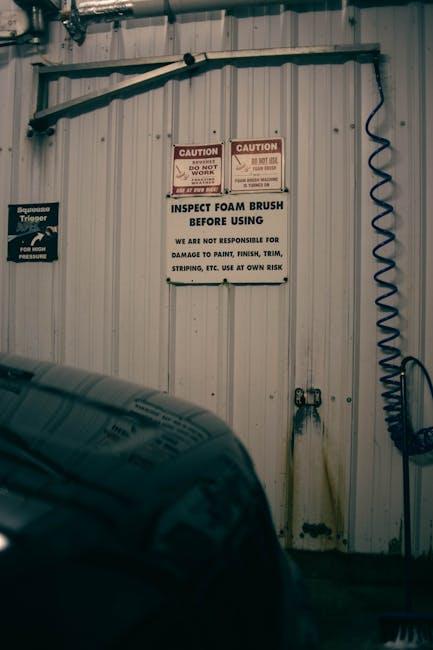
Techniques for Avoiding Scratches During the Wash
To minimize the risk of scratches, always begin by rinsing the car thoroughly with water. This step removes loose dirt and grit that can act like sandpaper when you later scrub the surface. Using a two-bucket method—one bucket for soapy water and another for rinsing your mitt—is a proven way to keep contaminants away from the paint. Opt for a microfiber wash mitt over sponges, as microfiber is gentle and traps debris instead of grinding it into the paint.
When washing, adopt a top-to-bottom approach. Dirt typically accumulates on the lower parts, so washing from the roof downwards prevents carrying heavier grime over clean sections. Avoid circular motions and instead use straight-line strokes to reduce swirl marks. Finally, dry the car with a soft, clean microfiber towel using gentle blotting or patting motions rather than rubbing vigorously—this helps preserve that glossy finish.
| Tip | Description |
|---|---|
| Two-Bucket Method | Separates clean and dirty water to avoid contamination |
| Microfiber Mitt | Soft texture traps dirt without scratching paint |
| Top-to-Bottom Wash | Prevents dragging debris over clean areas |
| Straight-Line Motion | Reduces swirl marks and fine scratches |
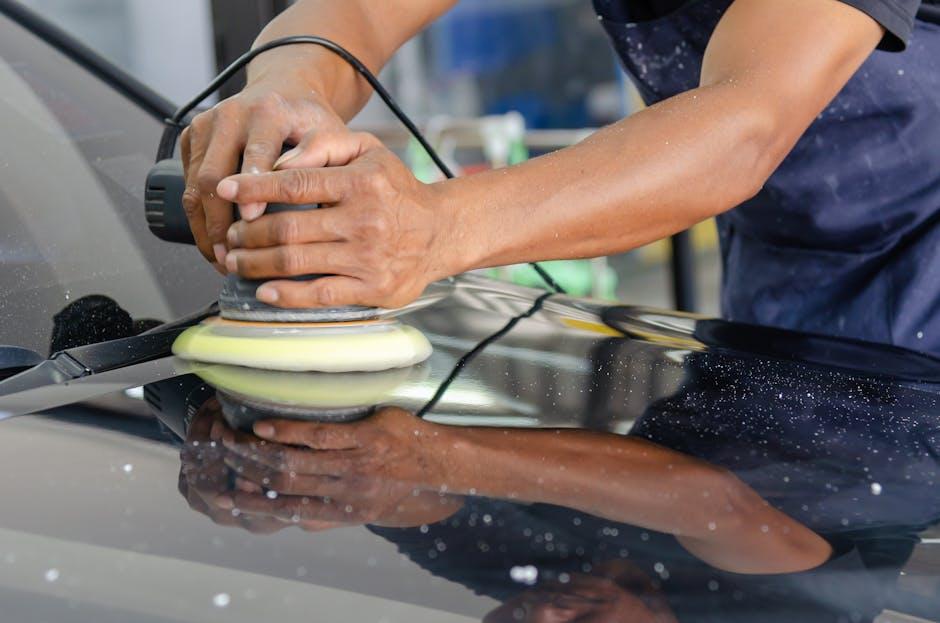
The Best Tools to Use for Gentle and Effective Cleaning
When it comes to preserving your car’s paintwork during washing, selection of the right tools is essential. Opt for microfiber wash mitts, as they offer a soft texture that traps dirt without scratching the surface. Paired with a high-quality foam cannon, these mitts allow for a gentle pre-wash rinse that loosens grime effortlessly. Avoid using abrasive sponges or brushes; instead, rely on tools designed specifically for delicate finishes to ensure your paint remains pristine.
Additionally, consider integrating these essentials into your cleaning arsenal:
- Two-bucket wash system with grit guards to prevent dirt transfer
- Soft drying towels made of microfiber to reduce swirl marks
- pH-balanced car wash soaps that are tough on dirt but kind to paint
- Detailing clay bars to remove embedded contaminants without damage
| Tool | Purpose | Benefit |
|---|---|---|
| Microfiber Wash Mitt | Gentle dirt removal | Prevents paint scratches |
| Foam Cannon | Pre-wash dirt loosening | Reduces friction |
| Two-Bucket System | Dirt separation | Minimizes contaminants |
| Clay Bar | Surface contaminant removal | Smooth finish |
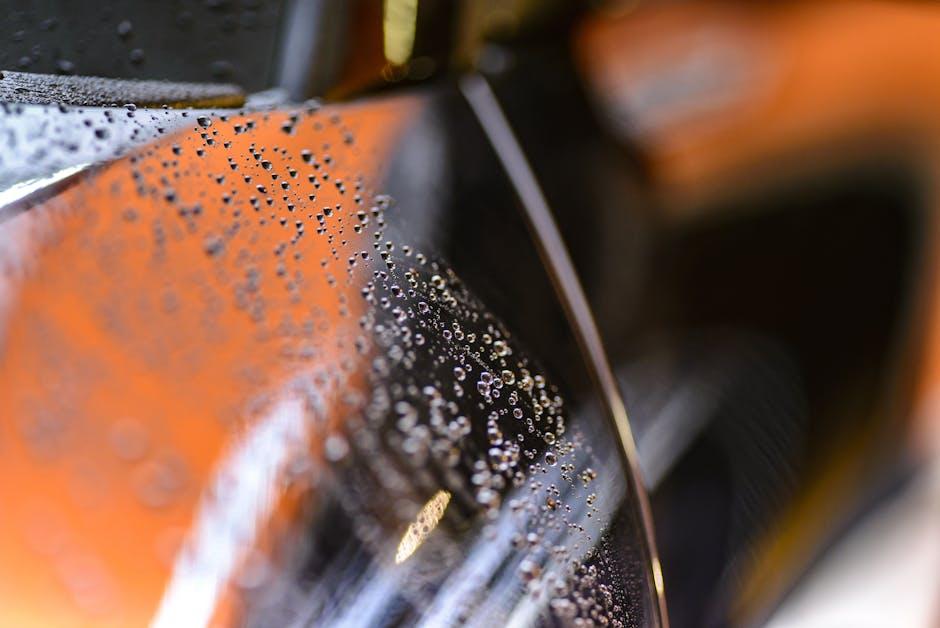
Proper Drying Methods to Preserve Shine and Prevent Water Spots
After washing your car, the drying process plays a crucial role in maintaining its glossy finish without inviting pesky water spots. Instead of air-drying, which can leave mineral deposits behind, gently pat the surface using a soft microfiber towel specifically designed for automotive care. These towels absorb water effectively and minimize friction that could potentially mar the paint. For best results, work in small sections, moving in straight lines rather than circular motions to avoid swirl marks that reduce shine.
To enhance drying efficiency and safeguard your paint, consider the following practices:
- Use a leaf blower or a dedicated car dryer to remove excess water from hard-to-reach areas like mirrors and door seams.
- Keep towels damp—occasionally rinse and wring out your microfiber cloth to prevent dirt accumulation.
- Apply a quick detailer spray during drying; this adds lubrication and boosts paint gloss.
- Avoid drying in direct sunlight to reduce rapid water evaporation and prevent streaking.
| Drying Material | Benefits |
|---|---|
| Microfiber Towel | High absorbency, gentle on paint |
| Chamois Leather | Natural softness, reusable |
| Car Dryer | Non-contact drying, reduces scratches |
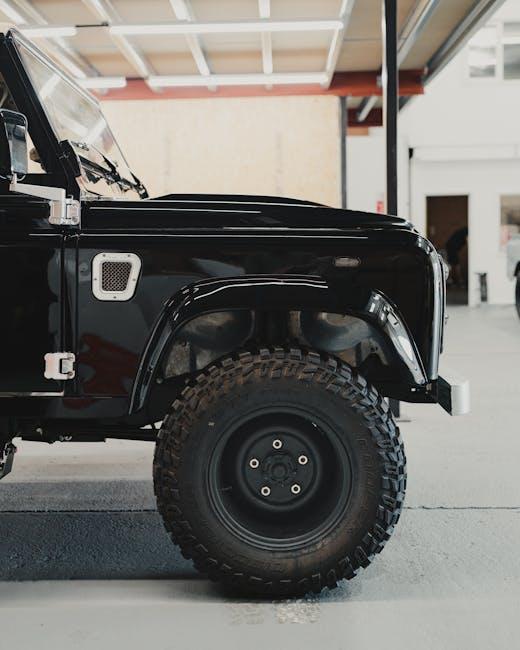
Long-Term Protection Strategies with Sealants and Waxes
For enduring defense against contaminants, applying a quality sealant or wax is essential. Sealants form a synthetic protective layer that bonds tightly to your car’s paint, offering robust resistance to UV rays, acid rain, and road salts. This layer not only enhances gloss but also simplifies future washes, allowing dirt to rinse away effortlessly. Wax, on the other hand, provides a natural, hydrophobic barrier derived from carnauba or synthetic blends that repel water and reduce swirl marks caused by washing. Choosing the right product and application frequency depends on your driving habits and environmental exposure, ensuring your vehicle retains its showroom finish for months on end.
To help you decide what’s best for your vehicle, here’s a quick comparison of sealants and waxes:
| Feature | Sealants | Waxes |
|---|---|---|
| Durability | Lasts 4-6 months | Lasts 4-8 weeks |
| Finish | Glossy & synthetic | Warm, natural shine |
| Application | Requires clean, dry surface | More forgiving, easier to apply |
| Protection | Better chemical resistance | Excellent water beading |
- Regular maintenance: Reapply wax every 6-8 weeks or sealant every 4-6 months, depending on exposure.
- Proper prep: Wash and clay bar before application to maximize adhesion.
- Use the right tools: Microfiber applicators and soft towels ensure a smooth finish.
Q&A
Q&A: How to Protect Car Paint When Washing
Q1: Why is it important to protect my car’s paint when washing?
A1: Your car’s paint is its first line of defense against the elements, dirt, and wear. Washing without care can cause scratches, swirl marks, and fading, diminishing your car’s shine and resale value. Protecting the paint ensures it stays vibrant and smooth for years.
Q2: What’s the right way to prepare my car before washing?
A2: Start by rinsing your car thoroughly with water to remove loose dirt and grit. This helps prevent debris from scratching the paint when you start washing. Choose a shaded spot to avoid the sun drying soap before you can rinse it off—a key step to protect your paint.
Q3: Which cleaning materials should I use to avoid damaging the paint?
A3: Use a high-quality, pH-balanced car shampoo rather than household detergents. Use a soft microfiber wash mitt instead of sponges or brushes that can trap dirt and cause scratches. Always have two buckets—one with clean, soapy water and one for rinsing your mitt—to keep contaminants out of the suds.
Q4: How should I wash my car to minimize paint damage?
A4: Wash your car gently in straight lines rather than circular motions to reduce swirl marks. Start from the top and work your way down, as lower areas tend to be dirtier. Rinse your wash mitt frequently to avoid rubbing dirt back onto the paint.
Q5: Is drying important after washing for paint protection?
A5: Absolutely. Leaving water to air dry can cause water spots and mineral deposits. Use a clean, soft microfiber towel to gently blot or drag dry the surface. Avoid rubbing aggressively, which can cause tiny scratches.
Q6: Are there any protective products I should apply after washing?
A6: Yes, applying a quality wax or paint sealant creates a protective barrier that repels dirt and UV rays, enhancing your paint’s durability. Some people also opt for ceramic coatings for longer-lasting protection, but regular waxing can work wonders if maintained.
Q7: How often should I wash my car to keep the paint protected?
A7: Regular washing every two weeks helps prevent dirt buildup and contaminants from damaging your paint. However, frequency can vary depending on your driving conditions and local climate.
Q8: Can pressure washers be harmful to car paint?
A8: Pressure washers can be safe if used at the proper distance and pressure settings, but too much force can chip or erode paint. It’s best to use a wide spray nozzles and avoid holding the jet too close to the surface.
Q9: What common mistakes should I avoid when washing my car?
A9: Avoid using household detergents, washing in direct sunlight, using dirty or abrasive materials, and skipping drying. Also, don’t use automated car washes with harsh brushes that can scratch your paint.
Q10: Is professional washing better for paint protection?
A10: Professional detailing can offer expert care, especially for thorough cleaning and protective treatments. However, with the right tools and knowledge, you can effectively protect your paint with DIY washing at home.
Keeping your car’s paint youthful and flawless is all about thoughtful washing practices. With patience, quality products, and a gentle touch, your vehicle will turn heads and stay protected mile after mile.
Closing Remarks
In the end, protecting your car’s paint while washing isn’t just about preserving its shine—it’s about honoring the craftsmanship beneath that glossy surface. With mindful techniques and the right tools, every wash becomes an act of care rather than wear. So next time you reach for the hose or sponge, remember: a gentle touch today means your car will keep turning heads tomorrow. Clean, protected, and polished—the road to lasting beauty starts with how you wash.

